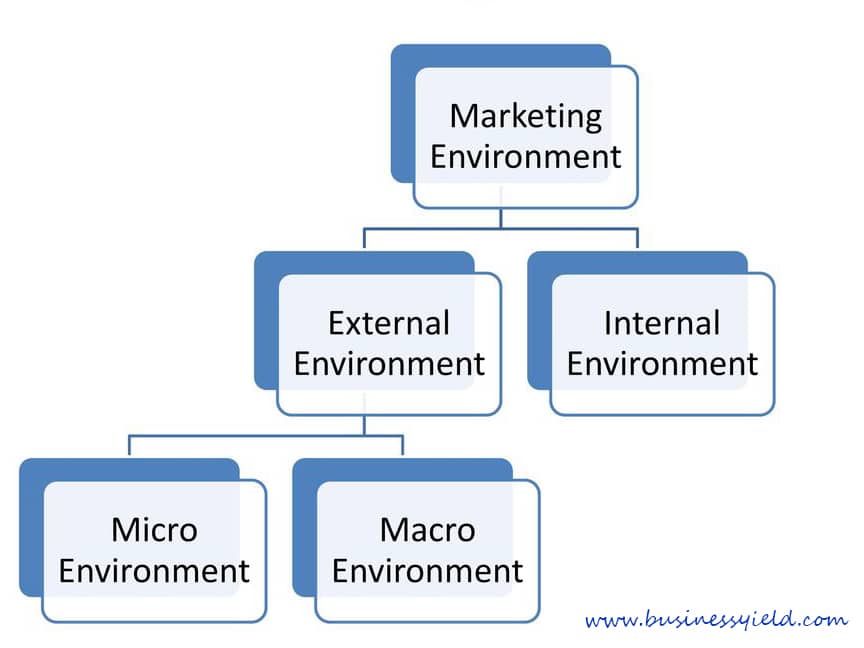Most marketers have one basic goal in mind: to produce leads for their company. But, if you work in marketing, you are aware that not all leads convert into paying clients.
So, how do you determine which leads are most likely to convert into buyers? And how many campaigns be optimized to generate more leads?
Are you ready to get started with lead scoring? Let’s define the lead scoring model and discuss some best practices for increasing your bottom line.
What is Lead Scoring?
Lead scoring is the act of assigning values, usually in the form of numerical “points,” to each lead you produce for the company. You may grade your leads based on a variety of factors, such as the professional information they’ve provided you and how they’ve interacted with your website and brand across the internet. This approach assists sales and marketing teams in prioritizing leads, appropriately responding to them, and increasing the rate at which those leads become customers.
You can evaluate your leads using the following criteria:
- Implicit data: Based on the information you already have
- Explicit data: True information obtained from a form or phone call by your lead
- Behavior data: Data based on the actions the lead has taken like submitting a form or downloading a whitepaper
- Demographic information: This includes information such as company size, industry, geographic region, and so on.
By prioritizing which prospects to target, the lead scoring process assists your marketing and sales teams in becoming more efficient. As a result, you may be able to enhance conversion rates and close deals faster.
What is Predictive Lead Scoring?
Ninety-one percent of marketers believe that automation is essential to success. A lead scoring model can help you enhance your productivity and conversions, but developing a system that works for your company might require a lot of testing and feedback. Lead scoring is primarily a human process that must be updated on a regular basis to ensure accuracy and outcomes.
If you want a “set-it-and-forget-it” technique, predictive lead scoring uses machine learning and data points to identify the best potential consumers, removing the need for manual work. To construct a formula that prioritizes your leads, predictive lead scoring will use the similarities between your customers and recycled accounts. As a result, your sales team will be able to contact prospects who are closer to making a purchase decision.
Predictive lead scoring uses machine learning to identify the best potential consumers if you’re searching for a “set-it-and-forget-it” technique.
Why is Lead Scoring Important?
It is vital to strike prospects with the correct message at the right time in order to complete the deal. It enables your company to produce more relevant engagement with each prospect and shorten the sales cycle. While lead scoring can be time-consuming, it can provide your team with precision.
It’s important to remember, though, that just because a lead engages with your material doesn’t mean they have any buyer’s intent at that time. Someone visiting your price page and downloading a whitepaper, for example, could just be doing research on your firm or looking for a new job.
Alternatively, you may need to shift your strategy away from the traditional scoring system in order to engage with your target audience on platforms where they hang out. Consider Slack, podcasts, direct messaging, and other channels that do not fit cleanly into your lead-scoring method.
Lead Scoring Model
The lead scoring model ensures that the values you assign to each lead accurately represent their suitability with your offering. Many lead scores are based on a 0 to 100-point scale, but each lead scoring model you develop will support a specific attribute of your core consumer.
Here are six possible lead-scoring models based on the type of data you can acquire from your customers:
#1. Demographic Details
Are you solely selling to a specific demographic, such as parents with small children or CIOs? Ask demographic questions in your landing page forms, and you can utilize the answers to determine how well your leads fit in with your target audience.
You may use this data to remove outliers from your sales team’s queue by deducting points for those who fall into a category you don’t sell to. For example, if you exclusively sell to a specific geographic area, you may provide a negative score to any lead that falls outside of the appropriate city, state, zip code, nation, and so on.
If some of your form fields are optional (such as a phone number), you may want to reward leads who provide that options information nonetheless.
#2. Business Information
Are you more interested in selling to businesses of a given size, type, or industry if you’re a B2B company? Are you more interested in business-to-business or business-to-consumer organizations? You may also ask questions like these on your landing page forms, giving points to leads that meet your target audience and deducting points from leads who aren’t at all what you’re looking for.
#3. Online Activity
The way a lead interacts with your website can reveal a lot about their level of interest in purchasing from you. Examine your leads who finally become customers: Which offers did they get? How many offers did they get? Which – and how many – pages of your website did they visit before becoming a customer?
The quantity and type of forms and pages are both critical considerations. Leads who visited high-value pages (such as pricing pages) or filled out high-value forms may receive better lead scores (like a demo request). Similarly, you might award better ratings to leads who visited your site 30 times rather than three times.
What about leads whose behavior has evolved over time? If a lead stops visiting your website or downloading your offerings, they may no longer be interested. You may deduct points from leads who have stopped connecting with your website after a particular amount of time. The length of time — 10 days, 30 days, or 90 days — is determined by your average sales cycle.
#4. Email Participation
You don’t know how interested someone is in buying from you if they have opted in to get emails from your firm. Open and clickthrough rates, on the other hand, will provide a much better indication of their degree of interest. Your sales team will want to know who read each email in your lead nurturing series or who clicked through your offer promotion emails on a consistent basis. They might then concentrate on those who appear to be the most engaged. Leads who click through on high-value mailings, such as demo offers, may also receive a higher lead score.
#5. Social Involvement
The level of engagement a lead has with your company on social media can also indicate their level of interest. How often did they interact with your company’s tweets and Facebook posts? How many times did they share or retweet those posts? If your target consumers are engaged on social media, try providing points to leads who have a certain Klout score or amount of followers.
#6. Spam Detection
Last but not least, you may wish to penalize leads who filled out landing page forms in ways that could imply spam. For instance, were the first, last, and/or corporate names not capitalized? Is it possible that the lead filled out any form fields by typing four or more letters in the traditional “QWERTY” term side by side?
You should also consider which types of email address your leads are using in comparison to your client base’s email addresses. If you’re marketing to businesses, you might deduct points from leads who use Google or Yahoo! email addresses.
Benefits of Lead Scoring
Now that we’ve established why lead scoring is such an important tool in the B2B buying cycle, let’s look at the four primary advantages for both the marketing and sales teams:
#1. Reduced marketing and acquisition expenses
By using lead scoring in his company, David Morneau, CEO of InBeat Agency, experienced a 40% reduction in marketing and acquisition costs.
What was the secret of its success? Because it assisted him in identifying and reducing marketing efforts that resulted in low-quality leads.
#2. Increased conversion rates with less time spent
The MQL conversion rate at AdChina.io was boosted by 25% thanks to Seema Nayak, Marketing Manager.
Her strategy? Sales representatives only contact leads with a score of 50 or higher. Leads with a score of less than 50 are routed through an automatic lead nurturing email procedure.
#3. Improved sales-marketing alignment
Are your sales personnel complaining about the unqualified leads generated by marketing?
That’s a huge red flag that you don’t have an efficient lead-scoring system in place, resulting in a schism between the sales and marketing teams.
When you employ a lead scoring process, you ensure that every lead sent on to sales is qualified in the manner agreed upon by both teams, increasing your conversion rate and strengthening the relationship between the two departments.
#4. Increased revenue
After implementing lead scoring in his organization, Michael Alexis, CEO of TeamBuilding, tripled his monthly revenue.
This isn’t some once-in-a-lifetime success story. According to a comprehensive study conducted by Eloqua, deploying lead-scoring systems raises transaction close rates by 30% and firm revenue by 18% on average.
One thing is certain based on these astounding results: lead scoring drives revenue growth.
How To Create a Lead Scoring Model?
To select leads, effective lead scoring integrates prospect demographic and behavioral data. The following are two of the most regularly utilized scoring dimensions:
- Prospect Identification: The prospect’s identity is represented by explicit data determining fit, such as title, industry, and firm revenues.
- Prospect Engagement: The prospect’s level of interest is determined by implicit data such as frequent visits to your website and responsiveness to marketing.
#1. Prospect Identification:
To define the prospect identity component of the lead score, you must do the following:
- To define a sales-ready stage of qualification, identify four to five explicit data categories.
- Determine the relative importance of these categories by assigning a percentage ranking. All percentages should add up to 100%.
- Within each category, assign a tiered set of relevant criteria values.
- To show how well a lead satisfies the ranking identity criteria, assign a letter from A to D, with A being the best fit.
#2. Prospect Interaction
Follow these steps to calculate the engagement score:
- Identify the implicit data types required to construct a sales-ready qualification step.
- Describe the importance of these categories in relation to one another.
- Assign values by weighting actions based on their timeliness.
- To show how much a lead satisfies the ranking engagement criteria, assign a value from 1 to 4, with 1 being the most engaged.
#3. Bringing fit and engagement together
Build a table that depicts a lead’s overall rating based on a combination of profile fit and engagement level. The profile fit scale is from A to D, and the engagement scale is from 1 to 4, with A1 being the most qualified and D4 being the least qualified. This will assist you in visualizing marketing qualified leads.
#4. Connect the score to the action.
After you’ve computed the scores and assigned a grade, you can decide whether to send the lead to your CRM system for priority follow-up or enter it into your long-term nurturing program.
By dividing the score into two dimensions, your marketing and sales teams will gain a better understanding of the score’s meaning and the approach to be taken with follow-up.
Divide the score from A to D. explicit = customer profile fit
1–4 implicit = level of involvement
Best Practices For Lead Scoring
One of the major best practices is to keep the lead scoring model simple, especially initially. When there are too many factors to assess, it can be difficult to establish which values are actually defining the score. It’s also critical to assemble a core group of key sales and marketing personnel to define criteria and business standards and make necessary adjustments each quarter.
The following are some more lead-scoring best practices:
- Describe what happens to each lead, from nurturing to sales hand-off (based on the matrix). Then think about how lead scoring affects compensation. If marketing is only judged by the number of inquiries or net-new persons in the database, changing behavior to pursue more qualified leads may hamper the achievement of other objectives.
- Concentrate on scoring criteria that have linked standardized data values. This will make program execution and refinement easier.
- Establish a service-level agreement (SLA) with sales that specifies the time frame for follow-up. A1 and B1 leads, for example, should be followed up on within 24 hours, whereas A2 to 3 and B2 to 3 leads should be followed up on within 48 hours.
- Give sales follow-up alternatives based on lead disposition. They include automatic nurture programs that educate the lead until it is ready for sale again.
- Re-evaluate your scoring system on a regular basis. To establish whether ratings truly reflect lead quality, solicit direct feedback from important stakeholders. Consider your sales acceptance percentage to be a measure of the health of your scoring program.
- Assess and quantify the impact of lead scoring on sales. Perform a closed deal study to identify insights about conversions and gradually feed those discoveries back into the lead-scoring software, with the ultimate goal of replicating your success.
Lead Scoring Road Map
While it is critical to increasing lead scoring now, you must also keep an eye on the future.
#1. Increasing awareness of potential influencers
As prospects receive more messages, information, and education through social media during the purchasing process, these peer channels will become more important. Indeed, awareness of how a person discovered a message, as well as where and from whom, will play an important role in lead scoring and nurturing procedures.
#2. Content Scoring
Businesses that modify their scoring model on a regular basis begin to see patterns in lead quality that can be directly linked to the information consumed during the buying process. Instead of the download activity itself, advanced firms are experimenting with scoring models based on content types, such as technical papers, product information, and customer testimonials.
#3. Scoring at the account level
Marketers must detect microtrends within a bigger range of interests since companies promote to individuals yet sell to businesses. Marketers will score leads more efficiently in the future to pinpoint when a specific role appears in the purchase cycle.
#4. Customer Scoring
To maximize client lifetime value, you must capitalize on up- and cross-selling opportunities. It means you must recognize when a prospect or existing client is in the cycle for a new product in your suite and when a prospect or existing customer has switched midstream and is interested in a different product. Smart marketers will examine all customer touchpoints in the future to discover opportunities and risks across the customer’s lifetime.
#5. Opportunity Scoring
Top marketers will examine a lead’s behavior all the way through the pipeline to estimate the likelihood of an opportunity closing.
#6. Forecasting Change
Even as your sales and marketing processes grow, your lead scoring model must remain closely aligned with them. You’ll be able to constantly track prospect behavior with predictive-modeling tools to determine how your model may need to alter.
You can align follow-up with inquiry and understand where each prospect is in the purchase process by objectively assessing sales leads with lead scoring. Lead scoring enables sales to focus on the most promising prospects and marketing to wisely target its efforts. By using the lead scoring best practices provided here, you can start converting more leads and increasing the productivity of your sales and marketing teams.
Conclusion
Lead scoring may appear to be a daunting task. Yet we can tell you that once a lead scoring system is implemented, your entire organization will become more productive and effective. In fact, firms that use a lead scoring system enhance their lead-generating ROI by 77%.
Hence, stop pondering about the best leads and stop sending unqualified leads to your sales staff. Start your lead scoring plan with your leadership immediately – your entire organization will thank you!
- What is Sales Forecasting? Methods and Real-world Examples
- LEAD NURTURING: Meaning, Examples & Strategy
- Ways B2B Companies Promote Their Blog For Lead Generation
- Lead Generation: Definition, Process, Tools, And Strategies (Simplified)
- BUSINESS LEADS: Meaning, Examples of Business Leads Websites & Providers






